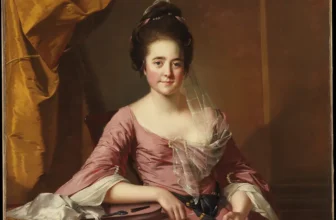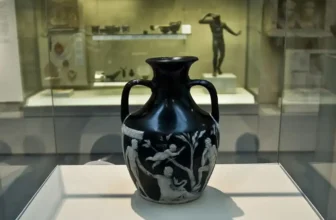How Restoration Affects an Artwork’s Value
The Truth About Art Restoration and Market Worth
Art restoration is one of the most fascinating, and misunderstood, aspects of the art market. Collectors, curators, and investors often find themselves torn between preserving a masterpiece and protecting its market value. The decision to restore a painting, sculpture, or antique can transform a work’s longevity, aesthetic appeal, and price, but it can also backfire if not handled with expertise and transparency.
In this comprehensive guide, we’ll explore how restoration affects an artwork’s value, why proper conservation can sometimes increase market worth, and what collectors must know before authorizing restoration work.
Understanding Art Restoration: Purpose and Process
Before analyzing how restoration impacts value, it’s important to understand what art restoration actually involves.
Art restoration is the professional process of repairing and rejuvenating a damaged, aged, or deteriorated artwork. The goal is to stabilize the piece and recover its original visual integrity, not to make it look “brand new,” but to conserve the artist’s intention as faithfully as possible.
Common Types of Restoration Work
Surface Cleaning:
Removal of grime, dirt, or yellowed varnish that accumulates over decades. This process can dramatically change the color balance and brightness of a painting.Structural Repairs:
Fixing cracks in paint layers, tears in canvas, or weaknesses in sculpture and frames.Retouching or Inpainting:
Small losses of pigment are filled in to match the surrounding colors. The best restorers use reversible materials so that future experts can undo or revise the work.Varnish Removal and Reapplication:
Old varnish can darken with time, muting the original colors. Carefully removing it and reapplying a fresh, non-yellowing varnish can reveal astonishing vibrancy.Conservation Treatments:
These are preventive measures such as climate stabilization, protective framing, or archival mounting, meant to slow further deterioration.
When done properly, restoration enhances both the longevity and legibility of a work. However, the market’s perception of restoration depends on how much intervention has occurred and who performed the work.
The Relationship Between Restoration and Market Value
The connection between restoration and market value is complex. Restoration can either increase or decrease an artwork’s price, depending on factors such as quality, extent, documentation, and transparency.
1. When Restoration Increases Value
Restoration can increase an artwork’s value under specific conditions:
Revealing Hidden Qualities:
A professional cleaning may uncover original colors, brushwork, or details that were obscured by dirt or aged varnish. When the art’s authentic beauty is revealed, buyers are often willing to pay more.Preserving Structural Integrity:
A fragile, flaking painting or cracked sculpture loses desirability because of conservation risks. A skillfully stabilized piece is far more appealing to collectors and museums.Museum-Quality Restoration:
If the restoration is performed by a recognized expert or a museum conservator, the work gains prestige. High-quality restoration signals to the market that the piece has been responsibly maintained.Enhancing Display Readiness:
Collectors often prefer artworks that are “wall-ready.” A restored piece can be exhibited immediately without additional costs or risks, raising its liquidity and sale potential.Historical or Emotional Value Recovery:
In some cases, restoration resurrects a work thought to be beyond repair or even misattributed. Restored masterworks that regain their original form can reenter the high-end market dramatically.
2. When Restoration Decreases Value
However, restoration can also reduce an artwork’s worth when it crosses ethical or aesthetic boundaries.
Over-Restoration:
Too much repainting, over-cleaning, or structural interference can distort the artist’s original intention. When the piece starts looking “new,” collectors may question its authenticity.Loss of Original Material:
The art market prizes originality. If the restoration removes or replaces substantial original paint, wood, or bronze, the work’s historical integrity is compromised.Poor Craftsmanship or Amateur Work:
A restoration done by an unqualified hand can cause irreversible damage. Once collectors see visible touch-ups, color mismatches, or clumsy repairs, trust and value plummet.Lack of Transparency:
Concealing restoration history can be disastrous. When buyers discover undisclosed repairs, it can lead to renegotiations, cancellations, or legal disputes.
The Science Behind Value Shifts: Condition vs. Authenticity
Art value is influenced by two primary variables: condition and authenticity. Restoration sits precisely at their intersection.
Condition refers to the physical state of the artwork, its surface, stability, and appearance. A better-preserved work is generally more valuable.
Authenticity refers to the originality of the artist’s hand. The closer a piece remains to its original form, the higher its cultural and financial worth.
Restoration, therefore, walks a fine line between improving condition and preserving authenticity. The ideal restoration is minimal yet transformative, improving the artwork’s presentation while keeping the artist’s original material untouched.
Collectors, auction houses, and insurers evaluate this balance meticulously. They often rely on condition reports and restoration documentation when determining market estimates.
Case Studies: Restoration Success and Failure
1. Leonardo da Vinci’s Salvator Mundi
Perhaps the most famous example is Salvator Mundi, a painting attributed to Leonardo da Vinci. Its extensive restoration revealed hidden layers of masterful brushwork beneath centuries of damage. After restoration, it fetched over $450 million at auction, becoming the most expensive painting ever sold.
Yet, controversy remains about how much of the visible surface is original. Despite doubts, the restoration elevated the painting from near obscurity to global fame, a clear instance of restoration amplifying market worth.
2. Michelangelo’s Sistine Chapel Ceiling
The Vatican’s cleaning of Michelangelo’s frescoes between 1980 and 1994 divided experts. Critics claimed the removal of centuries-old grime and soot erased subtle shading; supporters argued it restored Michelangelo’s original brilliance. Regardless of opinion, the project renewed global interest and increased the cultural (and insured) value of the frescoes exponentially.
3. “Monkey Christ” in Spain
On the opposite end, the infamous botched restoration of Ecce Homo by Cecilia Giménez in Borja, Spain, turned a small-town fresco into a viral sensation, for the wrong reasons. While it gained comedic fame, the value as a religious artwork vanished. Ironically, tourism revenue rose, but the case remains a textbook warning about unprofessional restoration.
These examples illustrate that the quality, transparency, and reputation of the restorer determine whether a restoration will be a financial triumph or a cautionary tale.
What Collectors Should Know Before Restoring Artwork
Restoration is an investment decision as much as a conservation one. Here’s what collectors, investors, and institutions must consider:
1. Always Obtain a Professional Condition Report
Before authorizing restoration, have the artwork examined by a certified conservator. The report should document all existing damages, prior restorations, and material composition. This becomes a crucial reference for insurance, valuation, and future buyers.
2. Choose Qualified, Accredited Restorers
Work only with conservators accredited by organizations such as the American Institute for Conservation (AIC) or equivalent bodies in your country. Ask for references, portfolios, and examples of similar projects they’ve completed.
3. Request Reversible Techniques
Ethical restoration today emphasizes reversibility, using materials and adhesives that can be undone without harming the original surface. This ensures future generations can re-treat the work as techniques evolve.
4. Keep Complete Documentation
Maintain all invoices, photos, and reports related to the restoration. This documentation not only proves the authenticity and professionalism of the process but can also add transparency and trust during resale or appraisal.
5. Consider Market Timing
Sometimes, restoring a piece right before sale may not yield the highest return. Certain collectors prefer to acquire unrestored works so they can oversee the process themselves. Discuss timing with your appraiser or art advisor.
6. Get an Updated Appraisal After Restoration
After restoration, have the artwork reappraised by a qualified expert. A successful restoration may increase insurance value and resale potential, but only if properly documented and validated by the market.
Transparency and Provenance: Key to Maintaining Trust
Provenance, the documented ownership and history of an artwork, is a cornerstone of its value. Restoration records form a vital part of that chain. When disclosed properly, they enhance confidence among buyers and institutions.
Conversely, undisclosed or poorly documented restoration can raise red flags during authentication or sale. Auction houses like Christie’s and Sotheby’s explicitly list any restorations in their catalogues, often with detailed condition notes and infrared photographs.
Transparency does not reduce value, it protects it. Modern collectors understand that centuries-old artworks inevitably undergo some level of conservation. What matters most is that the process was ethical, documented, and reversible.
How Restored Artworks Are Priced in the Market
Pricing a restored artwork involves nuanced assessment. Appraisers consider:
Extent of Restoration:
Minimal cleaning typically has no negative impact. Structural repairs or significant inpainting, however, might lower value depending on visibility and scope.Quality of Execution:
Expert, invisible restoration performed by a reputable conservator often neutralizes concerns. Amateur or obvious interventions, on the other hand, result in discounts.Rarity and Demand:
For rare or historically critical works, moderate restoration may have little to no impact on value because demand outweighs condition issues.Documentation and Provenance:
Detailed restoration reports can actually increase buyer confidence, translating to stronger bids or private sale offers.Market Segment:
In the high-end fine art market, collectors expect professional conservation. In the decorative or regional art market, restoration costs may not be recouped at sale.
Restoration as a Form of Stewardship
Art restoration should not be viewed merely as a financial maneuver but as an act of stewardship. Each generation inherits cultural treasures that require maintenance to survive environmental and temporal decay.
Responsible restoration ensures that masterpieces remain accessible, legible, and stable for centuries to come. Museums, for example, undertake restoration not for profit but for preservation. However, when restoration aligns with scholarly rigor and aesthetic sensitivity, it naturally enhances a work’s market appeal and cultural value simultaneously.
Modern Trends in Art Restoration and Market Perception
1. Technology-Driven Restoration
Infrared imaging, X-ray fluorescence, and digital microscopy now allow conservators to analyze artworks at the molecular level. These tools reduce risks and improve precision, fostering market confidence in restored pieces.
2. Eco-Conservation
New materials and solvents are being developed to minimize environmental impact. Collectors increasingly value sustainable practices, aligning restoration ethics with modern values.
3. Hybrid Art Conservation
Digital restoration, such as virtual color reconstruction, is emerging as a complement to physical conservation. This non-invasive technique is favored by museums wishing to preserve fragile works without altering them.
4. Market Education
As transparency improves, buyers today are more informed. They understand that a well-restored artwork is not “damaged goods,” but a professionally maintained asset. This shift is reshaping the stigma once associated with restoration.
Balancing Emotion, Aesthetics, and Economics
Art is both emotional and financial. Restoration decisions should honor both aspects. Collectors often develop deep attachments to their artworks, and restoring them can feel like reviving part of history. At the same time, restoration must be approached with financial awareness, considering insurance implications, resale potential, and long-term conservation costs.
When executed with care, restoration merges emotional satisfaction with economic wisdom. The artwork’s renewed vibrancy invites admiration, while its improved stability safeguards investment.
The Truth About Art Restoration and Market Worth
Restoration’s effect on an artwork’s value depends entirely on how, why, and by whom it is done. A masterfully restored piece, documented, transparent, and true to the artist’s vision, can increase in value, ensuring both beauty and legacy endure. But careless, excessive, or undisclosed intervention can do the opposite, eroding trust and authenticity.
For collectors, the key lies in education, transparency, and professional guidance. Restoration is not just about fixing the past, it’s about securing the future of art.
Handled responsibly, it transforms a fading treasure into a timeless investment. image/ invaluable




